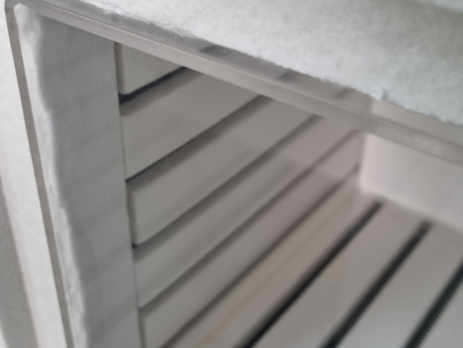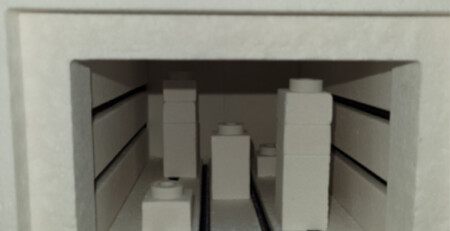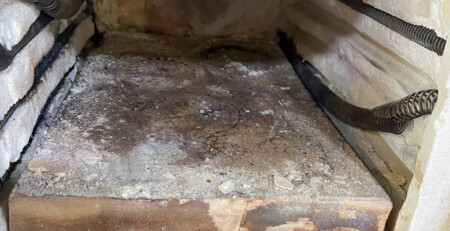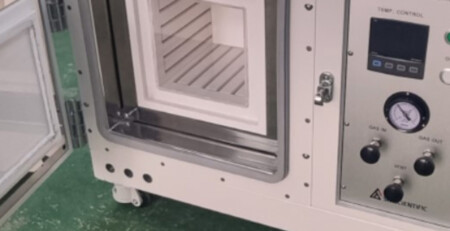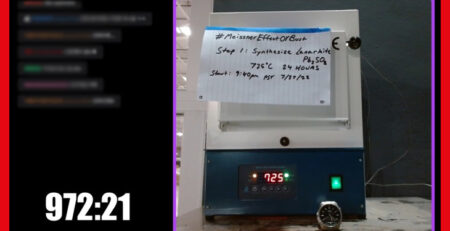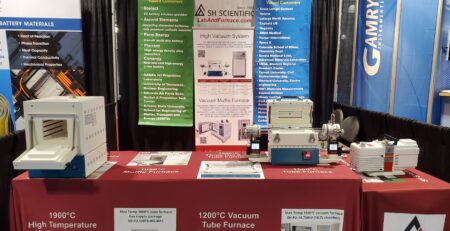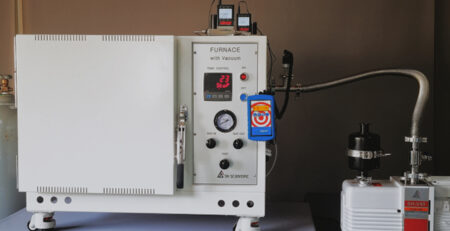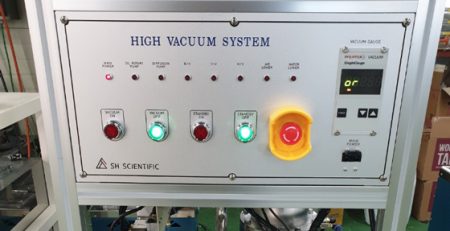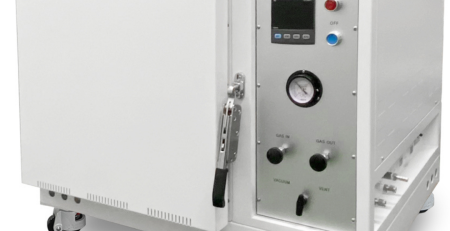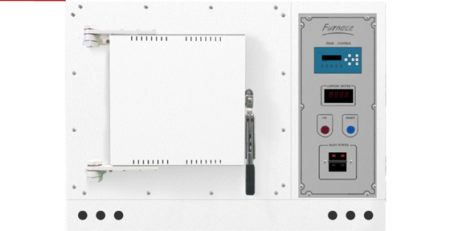Vacuum Muffle Furnace with Quartz Chamber
Our MGVQ line of quartz chamber vacuum muffle furnaces provide a cleanroom right inside your furnace’s chamber.
This series brings comprehensive programmability and complete gas flow control—ideal for calcination, sintering, and annealing.
What’s more, the high-performance quartz interior delivers three distinct advantages:
- Ensures non-contaminating cleanroom conditions for delicate samples
- Extends the life of the heating elements
- Enhances temperature control for even more precise thermal treatment

What’s a Vacuum Muffle Furnace?
A muffle furnace contains a rectangular central chamber surrounded by electrical heating elements, which are generally connected to a programmable, digital controller. This space-efficient chamber design offers terrific capacity per dollar.
But standard muffle furnaces have a problem: perfect inert gas saturation is elusive. Oxygen levels can remain stubbornly high near the corners, due to the non-crossing streamlines phenomenon.
We’ve solved this problem by fitting a vacuum pump to our proven, benchtop muffle furnace design. This ensures complete atmospheric control without the space constraints of a tube furnace.
Most muffle furnaces also have a ceramic interior, which incurs a small risk of contamination or, rarely, dust combustion. We offer a quartz interior for absolute sample purity: unlike ceramic, it’s inherently free of any powdery surface or residue. In addition, quartz increases heating element lifespan in the presence of inert gases.
Tube furnaces for battery research remain popular as well. They don’t rival the space-efficiency of a muffle furnace, but they often make sense for extreme temperatures and/or very small treatment batches.
The Role of Quartz-Chamber Vacuum Muffle Furnaces
Cathodes & other secondary battery components
Secondary batteries are light and long-lasting, so they’re ubiquitous in everything from electric vehicles to phones and laptops.
These days, most of them are rechargeable lithium-ion batteries, which comprise a cathode, anode, electrolyte, and separator. The cathode determines capacity and voltage, whereas the anode affects charging speed and life.
These critical components are highly sensitive to oxidation, so they’re most often processed in tube furnaces. But the battery market is expanding at breakneck speed, and tube furnaces don’t always have enough capacity to keep up.
This is a particular issue with cathode materials, which are key to meeting market demand for high-quality, energy-dense batteries. This critical component requires calcination at roughly 800°-1000° C, under a tightly controlled process that ensures absolute purity.
Our quartz-chamber vacuum muffle furnace provides a reliably oxygen-free environment and an unreactive, non-contaminating surface. Based on customer feedback, we believe it is today’s most efficient and cost-effective approach for producers of high-performance cathodes and other battery components.
Novel battery designs
The batteries of the future are solid-state.
In fact, solid Li+ ceramic electrolytes are poised to solve many of today’s biggest challenges with energy storage, from fire hazard to longevity to energy density.
But building the future requires novel techniques today. For instance, producing solid-state ceramics under 700°C may yield better control over lithium-oxide thin film structures. Eventually, liquid-based densification, vacuum processes, and grafting may even replace the classic (and much hotter) methods of sintering and calcination.
These lower-temperature techniques promise better control over conductivity, which ultimately means safer and more efficient batteries.
Of course, reliable ceramic electrolytes depend on the purity and structural integrity of their materials, so vacuum muffle furnaces are essential for R&D.
And at SH Scientific, we’re proud to serve innovators in the design and manufacturing of low-cost solid-state batteries.
So what role, exactly, do our vacuum muffle furnaces play?
Thermal Treatment Overview
Battery facilities often use vacuum muffle furnaces with quartz chambers for synthesis of materials, debinding, calcination, and drying.
The process comprises three main steps:
- Pyrolysis
- Carbonization
- Graphitization
Pyrolysis generally takes place between 200°C-400°C, but potentially up to 900°C. This stage forms a lot of off-gases, so the furnace must be ventilated to keep the chamber’s atmosphere pure.
- For pyrolysis, we recommended the quartz-chamber MGVQ series, with a maximum operating temperature of 1100°C.
- For carbonization or graphitization, please send us an inquiry about ultra-high-temperature alumina chambers.
Sintering
One common use is to prepare ceramic for use in electrodes and even solid electrolytes. The ceramic needs to reach an extremely dense state, which is generally achieved through sintering.
Standard sintering techniques require high uniformity throughout the heating chamber. A vacuum muffle furnace is the most cost-effective way to provide this consistency, especially at the higher quantities of a production or large-scale research facility.
Annealing
Many traditional and solid state batteries contain specialized alloy components. These are subjected to thermal annealing, which removes irregularities that would jeopardize performance and/or safety.
Oxidation and temperature fluctuation can undermine the annealing process, so many laboratories employ a programmable vacuum muffle furnace to ensure complete inert gas saturation.
Monolayer Graphene via CVD

Graphene is a relatively new material at the cutting edge of battery technology. It’s often produced through chemical vapor deposition, or CVD. This process involves heating a substrate before introducing a volatile metal gas, which decomposes and adheres to the substrate. A second gas—usually hydrogen—is introduced to react with the adhered molecules, forming a waste gas and leaving the metal atoms behind. Slowly, those remaining atoms accumulate into a usable graphene monolayer.
Vacuum muffle furnaces can be especially effective for newer, low-temperature CVD techniques. The nature of the reaction (and the toxicity of its by-products) means gas flow and vacuum control are critical.
Why Use an SH Vacuum Muffle Furnace?
Battery R&D revolves around several delicate thermal treatments. Every SH furnace provides fully programmable temperature control, with rapid heating/cooling and high uniformity you can trust.
We equip battery labs with:
- A quartz chamber to maximize sample purity and heating element longevity
- A programmable digital controller (up to 1100°C at +/-1°C uniformity)
- An optional digital mass flow controller for precise, responsive, and stable gas management across 98 inert gas presets, supported by a back pressure regulator to maintain positive pressure inside the chamber
- An available vacuum pump with throughput of up to 596 L/min (21 cfm)
We’re proud to offer Korea-built, USA-supported vacuum muffle furnaces to today’s leaders in energy storage research.
To discuss detailed specifications or request a custom quote, please contact us today.


